RANKS IN THE ARMY
LIEUTENANT GENERAL (LT GEN)
 |
Holds the most senior appointment; the Chief of Defence Staff. |
MAJOR GENERAL (MAJ GEN)
 |
Commands formations of division size, senior staff appointments. In the Lesotho Defence Force, they also hold the position of Deputy Chief of Defence Staff and Chief of Staff. |
BRIGADIER (BRIG)
 |
The start of Generals in the Lesotho Defence force. Brigadiers can command a brigade or be Assistant Chief of Staff (ACOS) for operational groups, eg ACOS logistics. |
COLONEL (COL)
 |
The Colonel typically serves as senior staff officers and Directors in their respective units. The directors formulate policies of their units and advice the high command. |
LIEUTENANT COLONEL (LT COL)
 |
Lieutenant Colonels commands the Battalion which is up to 400 Officers and Soldiers comprising three to four companies. They are responsible for the overall operational effectiveness of their unit in terms of Military capability, discipline and welfare. They can also hold the position of staff officer I (SO1) |
MAJOR (MAJ)
 |
The rank of Major in an Infantry Battalion holds a 2ic position appointment in a Battalion. His/her tasks include training of soldiers, welfare and admin from the HQ as well as the management of their equipment. Outside the Infantry setting, the Major can be a Staff Officer (SO2). |
CAPTAIN (CAPT)
 |
Captains are company commanders within the battalions. They are key players in tactical responsibility for operations and overall running of a company. They serve as Staff Officers (SO3) and the lowest staff rank. |
LIEUTENANT (LT)
 |
This is a rank commanding a platoon size unit. They could as well be deployed in other units. |
SECOND LIEUTENANT (2LT)
 |
The officer shall on first being appointed to the rank of 2Lt which is the first rank on commissioning. This time they are being deployed to various units and or sub-units as may be required. From this time, they are responsible for leading up to 30 soldiers, if they are not specialists in their job.. |
OFFICER CADET
 |
This is the rank held during initial officer training. Cadet Officers can be trained directly from civil life and from serving members within the L.D.F. |
WARRANT OFFICER CLASS 1 (WO1)
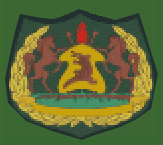 |
Warrant Officer Class 1 (WO1) is the highest group of non - commissioned ranks, holding the CDS authority. In the LDF the five highest group are as follows; Force sergeant Major (FSM), Brigade sergeant Major (BSM), Arms Logs sergeant Major, Air Command sergeant Major and Ground Forces Arms sergeant Major. |
WARRANT OFICER CLASS 2 (WOII)
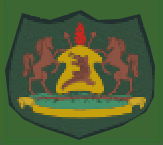 |
Warrant officers Class 2 (WOII) have the same leadership responsibilities and authority within their own field of expertise. Most have appointments as per their deployments such as company sergeant Major (CSM) and Quarter Master sergeant Major. |
STAFF SERGEANT (S/SGT)
 |
Staff sergeants are usually promoted from the rank of Sergeant. They can also hold other appointments such as Colour Sergeant and Quarter Master. |
SERGEANT (SGT)
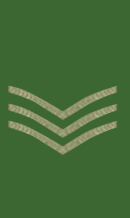 |
The tasks amongst others at this rank are logistical and administrative. In the absence of the platoon commander he commands troops in operational tasks. |
CORPORAL (CPL)
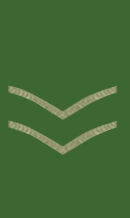 |
The promotion to the rank of corporal will follow depending on ability to lead. They are required to command a team of soldiers known as a section and he is called a section commander. |
LANCE CORPORAL (L/CPL)
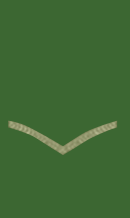 |
Promotion to the rank of lance corporal may follow after 3 years as a Private. They are required to command a smallest team of soldiers, and he is known as a section 2ic. This rank does not prevent them from becoming specialist in any military training as per their interest. |
PRIVATE (PVT)
 |
On completion of military training, all new soldiers start as Privates. With addition specialized trainings, the individuals may earn titles such as signaler, Rifleman, Gunner and Runner. |
BOY
 |
Boy does not hold military badges of rank and do not wear military uniform. |
Our People
LDF tasks are always delivered directly by soldiers through human interaction. They are our greatest assets. The LDF embraces diversity, inclusivity and contributes to society in everything it does. We have to make life-critical decisions and take purposeful action in sometimes hostile, confusing and unclear situations that occasionally test us to the limit of human endurance. Our training, development and preparation is personally rewarding but also ensures we are united by common values and strong bonds and will do the right thing, even under the most difficult circumstances.
Copyright © 2021 - all rights reserved by Lesotho Defence Force. Designed & Developed @ PAO & PROTOCOL By Col Mashili, PVT Mphutlane & PVT Pule
